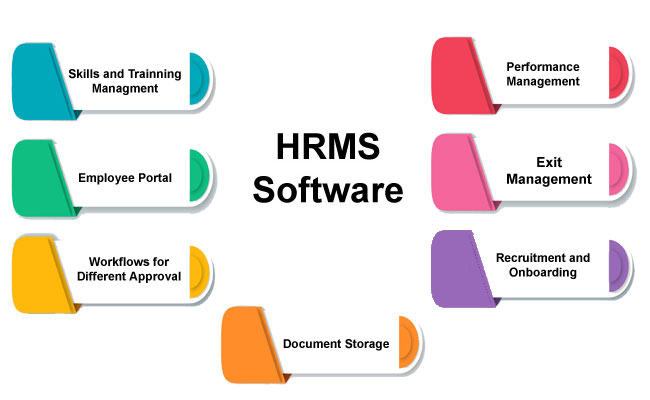How do companies manage their employee data?
We often have discussions with senior management of small and mid-sized companies on the HR software they use to manage their employees and processes. In many cases – the only HR software that companies use is a payroll software.
Their employee data is typically spread between their payroll software, spreadsheets, paper files, emails and documents stored on a shared folder.
Is this happening in your company too?
If so, we suspect there are many challenges faced by your employees, managers, HR and management.
Features of a payroll software
Let us first try to understand what are the functionalities associated with a payroll software. Wikipedia defines Payroll Automation as the following set of activities
- – Calculating and paying wages, settlement of tax with holdings and sharing with employees
- – Compiling statistics and reports
Payroll software is typically managed by very few people in the accounts or HR departments and does not include employee access.
Features of HRMS
Features of a Human Resource Management System or HRIS (Human Resource Information System) are:
- › A form of HR software that combines a number of systems and processes to ensure the easy management of a business’ employees and data.
- › Human Resources Software is used by businesses to combine a wide range of necessary HR functions. This includes storing and organizing employee data, managing payrolls accurately and efficiently, overseeing recruitment processes, administering employee benefits and keeping track of attendance records.
- › It ensures everyday Human Resources processes are manageable and easy to access.
Any leading HRMS software would further offer functionalities such as

- » Employee portal
- » Workflows for different approvals
- » Document storage
- » Recruitment and Onboarding
- » Exit management
- » Performance management
- » Skill and Training management
Since the HRMS software is accessible by all employees, security and access controls (who can see what) and usability are extremely important feature that must be built grounds-up in the software.
How did payroll start acting as a HRMS?
Any company must process payrolls periodically. To do this, they purchased payroll software from specialized payroll vendors.
As a part of the payroll run, the companies provided data such as: new & exited employees, address and dependent changes, time cards, benefits and any other information that could impact the calculation of wages or with holdings.
Managing all this data was tedious and hence the payroll vendors started building additional functionality and a simple Payroll started acting as a HRMS.
Challenges faced by customers when they use Payroll as HRMS
To begin with, a small set of administrative level employees were expected to use the Payroll software. These users were aware of compliance rules and could be trained easily to manage the software.
The security requirements were minimal, workflows were not in-built and usability testing was not carried out. Each of these features were iteratively added to the payroll software based on the evolving market needs.
Today employees expect latest and engaging User Interfaces, mobile access and functionality on a click or tap. They do not find the upgraded payroll software engaging and often look at it as legacy stuff. The engagement with such platforms is often low and employees only access it when they “have” to.
Managers, who ideally should be using the HRMS for critical employee related decisions, often find the reporting and analytics to be clunky, rigid and non-intuitive. Key employee development and engagement initiatives often take a backseat because of these inherent limitations and people go back to using excel sheet for taking these decisions.
Overall, the experience of using the Payroll as HRMS leads to dissatisfaction. As India’s new Labour Codes reshape how organisations handle wages, benefits, and workforce governance, it has become clear that payroll-alone systems often lack the depth needed to support modern HR responsibilities.
What is the approach moving forward?
Payroll processing is one small part of the entire gamut of employee data management activities. Letting your payroll software manage employee data – may have been the only option available in earlier times but it is no longer so.
With availability of sophisticated cloud based HRMS software, that can easily integrate with any payroll software, companies can pick and choose the right HRMS that engages employees, helps in their development, rewards the performers and provides one-touch data analytics to managers for real-time decision making.



This blog provides great insights on how payroll software can double as an effective HRMS. It highlights key benefits like automation, efficiency, and improved employee management.
A well-articulated blog offering valuable insights on the symbiotic relationship between payroll software and HRMS. Integrating these systems not only enhances efficiency but also facilitates comprehensive workforce management.
Useful Post, This has been really helpful blog post! Thank you for compiling it
Loved the detail and explanation about the software , and was very helpful to understand a payroll software better , would love to see more post on this . you can even compare softwares which are listed on technology counter and and refer to it for your future post .